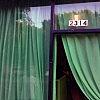Telling the Herbalife story from a Latino perspective

Few businesses have penetrated the Latino market as successfully as Herbalife, which sells weight-loss products and nutritional supplements. Today, Herbalife is a $3.5 billion business, and 65 percent of its sales in the United States are to Latinos.
Today, the company’s marketing and sales techniques are the subject of a high stakes battle among elite hedge fund managers. Their bets hinge on the question of whether or not the direct sales company is operating a pyramid scheme.
The national press has focused on the warring titans and their outsized personalities as each gambles on his respective position. But it was a youth journalist in the Latino community of Boyle Heights who was one of the few reporters in the United States to tackle the story on the streets of a local Latino community. It wasn’t the headlines in the Wall Street Journal that drew her to the story. Ericka Oropeza decided she wanted to research and write on the topic after seeing how much money her mother spent on Herbalife.
What can a reporter accomplish when her reporting topic is interwoven into her daily life? Can she maintain her journalistic objectivity while describing with intimate familiarity the way a controversial player functions in her community?
I had a window seat on the storytelling as co-editor and publisher of Boyle Heights Beat, a project our USC Annenberg program launched with La Opinion, the Spanish-language daily in Los Angeles. Supported by The California Endowment, Boyle Heights Beat tells the stories of an immigrant neighborhood as reported by its youth. The print edition is distributed to 22,000 households by La Opinion trucks, reaching most of the 90,000 residents in this densely-populated working class neighborhood.
Ericka’s experience shows the promise and possibilities for the craft at a time when small, shoestring operations are springing up across the country to cover communities in ways not attempted before. Her work, subsequently published in La Opinion as well, makes the case for combining an insider sensibility with journalism values.
A high school student in Boyle Heights, Ericka made her way to unmarked storefronts draped in Herbalife’s signature green and to Zumba classes where sales reps mixed up blender drinks with added Herbalife supplements.
She showed the extent to which Herbalife had inserted itself into the daily life of Boyle Heights and other similar communities and provided details on the hefty prices its sales reps pay to get into the business. She nicely conveyed the sometimes illicit feel of Herbalife’s storefront operations, writing:
“They can be found in unmarked storefronts, garages, in the back of Zumba classes and even on street corners. There is no sign that says what’s inside or what time it opens. The fact that a lot of people start arriving at the same time gives the impression you need to be a member to go inside.”
Her mother became a willing partner in the reporting process, letting her know where storefronts could be found and introducing her to sales distributors.
When we asked Ericka to write a first-person story to accompany her reporting, I braced myself for a blast of opinion. But no. Jotting down ideas during a break from a school field trip, Ericka displayed a reporter’s curiosity and news instincts:
“I wrote about Herbalife because I was curious to what it was and why I saw it so much of it in my community. I didn’t notice it until my mother, who was a former consumer, introduced it to me. “
It struck Ericka as odd that Herbalife could be both ubiquitous and unknown to many in her community.
“After that, I started realizing that there are so many of these Herbalife nutrition clubs in my community. I’ve received many fliers and invitations to these clubs. I’ve even seen students at my school take the product in a cup that says “Herbalife.”
“While there are so many of these clubs, some people in the community don’t even know they are there. Herbalife clubs are almost a secret group. To be part of one and find out its location, a person must get an invitation.”
In the end, the closest Ericka gets to an opinion in her opinion piece is a wry comment on the expense and unlikely effectiveness of the popular products.
“My own mother spent between $100 to $200 a month on Herbalife products. She believed they helped her lose weight and made her feel healthier. Personally, I didn’t understand why she didn’t just change her diet and eat more fruits and vegetables. When my Aunt tried it, she didn’t see the results she expected. In the end what I’ve observed led me to believe that the product doesn’t work well with everyone’s system.”
Here is Ericka’s full story.
And here's her personal account of the reporting.
Below, a photo of an unmarked storefront in Boyle Heights where Herbalife customers gather regularly.

Photo Montage credit: Herbalife

